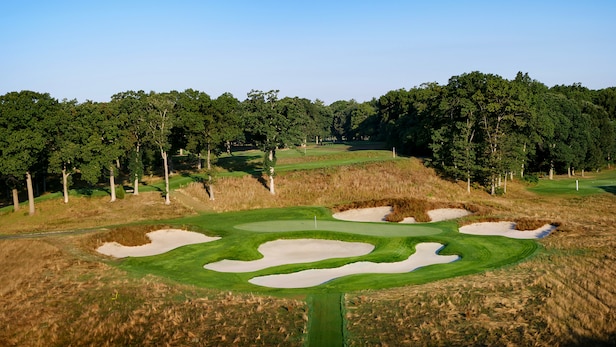FARMINGDALE, N.Y. — Ask any New Yorker about Bethpage Black and they’ll likely tell you three things: Tee times are hard to get, the course is incredibly tough and, lastly, the greens are … well … flat.
I played the course for the first time in 2024, and I was struck by the latter. How can a course that is notoriously difficult have such flat greens? Seriously, the New Yorkers aren’t lying. So how does that challenge the best players in the world? And does it favor the better putters or level the playing field for the poorer putters?
First, let’s take a look at the surfaces and how flat they are. Below is a StrackaLine comparison of greens at Bethpage compared with those at Augusta National.
Take a look at the second hole at both courses. The darker the color, the more the slope.

Now, here’s a comparison of the ninth greens, including one of the most famous putting surfaces at Augusta.
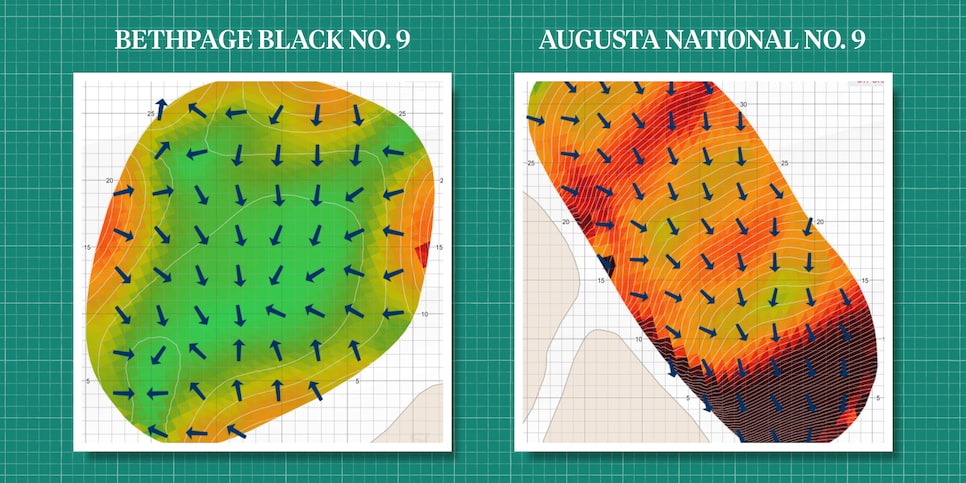
OK, how about the 13th greens at both courses.
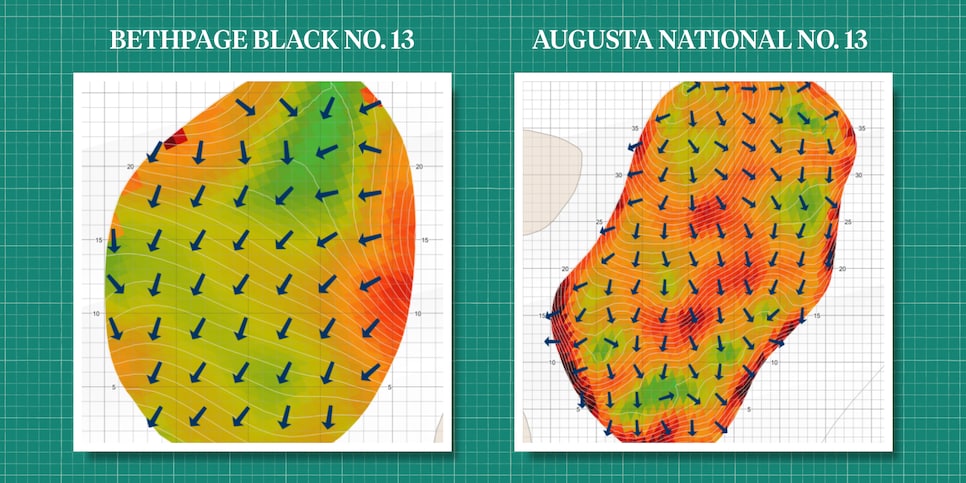
You get the picture, the greens are pretty flat overall at Bethpage Black. But that doesn’t answer the question regarding which team or players that will benefit the most. To get there, I called in help from two famously good putters, both of whom played on multiple Ryder Cup teams.
Brad Faxon, a member of the American squad in 1995 and 1997, first played Bethpage Black at the 2002 U.S. Open. “Everyone was telling me how much I was going to like the flat greens, how many putts I was going to make.” Faxon told me on Monday.
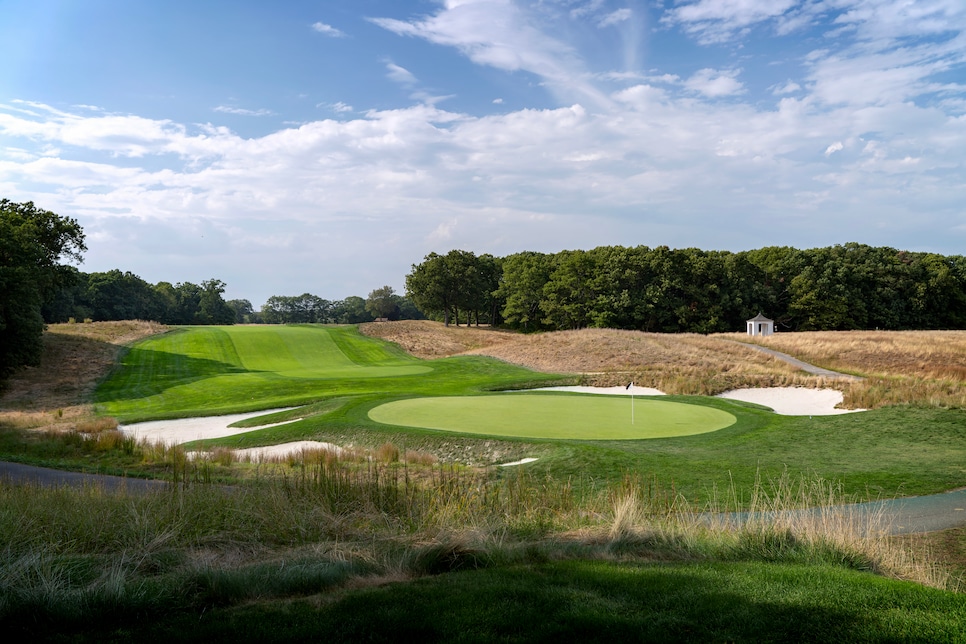
The green on the par-4 sixth hole at Bethpage Black.
Gary Kellner
There is a common belief that if the greens have less slope, they are more predictable and therefore better putters will hole more putts. However, Faxon doesn’t buy this theory.
“The greens were in perfect condition that week, but I found it very difficult to trust my reads.” he said. “For me, it was always easier to play putts with a generous amount of slope.”
Faxon, known as one of the best putters on the PGA Tour at the time, struggled that week 23 years ago. Rounds of 75, 74, 73 and a closing 80 saw him finish tied for 66th.

The U.S. Ryder Cup team practicing on the first green at Bethpage Black.
Jamie Squire
“My thoughts on the flat greens are probably contrary to what the typical golf fan would think.”
Ken Brown played in five Ryder Cups, once representing Great Britain and Ireland in 1977, then as part of the European side in 1979, 1983, 1985 and 1987. The Scotsman was considered one of the best putters on the European Tour in that era and has gone on to teach putting to some notable pros. He’s also author of the book One Putt: The Ultimate Guide to Perfect Putting in 2016.
“Flat greens can be trickier to read,” he told me, seemingly agreeing with Faxon.
“Remember you can have flatter greens running at faster speed than sloppy greens. The shorter grass the easier it is strike putts consistently from the sweet spot. But remember, we’re talking about the best players in the world this week.”
More Ryder Cup Preview Coverage  Ryder Cup Ryder Cup 2025: Power rankings for all 24 players competing at Bethpage Black
Ryder Cup Ryder Cup 2025: Power rankings for all 24 players competing at Bethpage Black  ‘Sprint’ Starts This overlooked strategy wins Ryder Cups—stats prove it
‘Sprint’ Starts This overlooked strategy wins Ryder Cups—stats prove it  Voices Ryder Cup 2025: Will Bethpage be a breaking point for fan behavior?
Voices Ryder Cup 2025: Will Bethpage be a breaking point for fan behavior?
One of those players, Tommy Fleetwood, has taken advice on his stroke from Brown in recent months. The Englishman arrives at Bethpage as the third best player in the world, according to Data Golf, and rode a hot putter last month en route to winning the Tour Championship and FedEx Cup in Atlanta.
Fleetwood improved from outside the top 90 in strokes gained/putting in 2024 to a top 20 putter on the PGA Tour this year. But it appears debatable whether the flat greens of Bethpage will suit his improvements.

The green on the par-4 fifth hole at Bethpage Black.
Gary Kellner
“Putting is always easier when you don’t have to aim the ball outside of the hole” Brown said. “Especially from inside six feet. This will slightly help less adept putters.
“Judging the pace of putts on flatter greens is also easier as there’s less tiers and slopes to consider.”
The challenge for all 24 players at Bethpage this week will largely be tee-to-green, with a course measuring nearly 7,500 yards and plenty of elevation throughout. The greens however, albeit flat, may yet puzzle the best putters in each team.
More Ryder Cup Preview Coverage  Explainer Ryder Cup 2025: What’s the deal with players being paid for the Ryder Cup? A Q&A
Explainer Ryder Cup 2025: What’s the deal with players being paid for the Ryder Cup? A Q&A 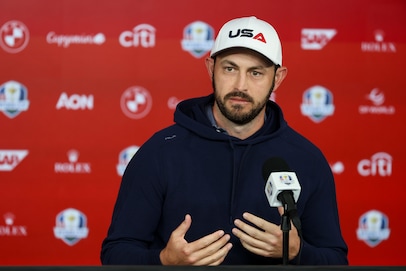 Modern technology prevails Ryder Cup 2025: Everyone rest easy, they have made a hat that fits Patrick Cantlay for Bethpage
Modern technology prevails Ryder Cup 2025: Everyone rest easy, they have made a hat that fits Patrick Cantlay for Bethpage  Teamwork Ryder Cup 2025: Scottie Scheffler and U.S. teammates come to Bryson DeChambeau’s defense following harsh criticism
Teamwork Ryder Cup 2025: Scottie Scheffler and U.S. teammates come to Bryson DeChambeau’s defense following harsh criticism
This article was originally published on golfdigest.com

